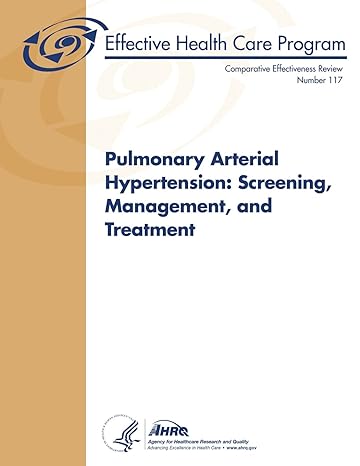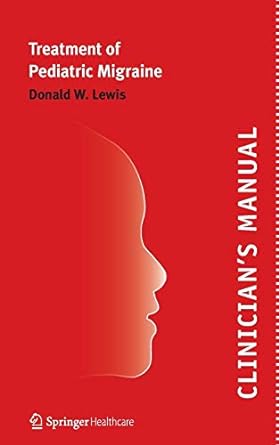Go back


Pulmonary Arterial Hypertension Screening Management And Treatment Comparative Effectiveness(1st Edition)
Authors:
U.S. Department Of Health And Human Services, Agency For Healthcare Research And Quality

Cover Type:Hardcover
Condition:Used
In Stock
Include with your book
Free shipping: April 04, 2024Popular items with books
Access to 3 Million+ solutions
Free ✝
Ask 10 Questions from expert
200,000+ Expert answers
✝ 7 days-trial
Total Price:
$0
List Price: $23.99
Savings: $23.99(100%)
Book details
ISBN: 1491081201, 978-1491081204
Book publisher: ? CreateSpace Independent Publishing Platform
Get your hands on the best-selling book Pulmonary Arterial Hypertension Screening Management And Treatment Comparative Effectiveness 1st Edition for free. Feed your curiosity and let your imagination soar with the best stories coming out to you without hefty price tags. Browse SolutionInn to discover a treasure trove of fiction and non-fiction books where every page leads the reader to an undiscovered world. Start your literary adventure right away and also enjoy free shipping of these complimentary books to your door.
Pulmonary Arterial Hypertension Screening Management And Treatment Comparative Effectiveness 1st Edition Summary: Pulmonary arterial hypertension (PAH), a subcategory of pulmonary hypertension (PH), is a rare and progressive disease whose prevalence is estimated to be between 15 and 50 cases per 1 million adults. While the pathophysiology is not well understood, both genetic and environmental factors have been found to contribute to changes in the pulmonary vasculature, causing increased pulmonary vascular resistance. This increased resistance, if unrelieved, progresses to right ventricular pressure overload, dysfunction, and ultimately right heart failure and premature death. Before the availability of disease-specific therapy in the mid-1980s, the median life expectancy at the time of diagnosis was 2.8 years. There are two separate populations for which screening for PAH needs to be considered. First, there are patients with symptoms that raise the suspicion of PAH. The symptoms of PAH can be insidious and nonspecific and may include shortness of breath, fatigue, weakness, chest pain, syncope, leg swelling, and abdominal distention. Symptoms that are present at rest suggest advanced disease. Since these symptoms are nonspecific, screening may be necessary to help the physician decide whether the patient should undergo a diagnostic workup for PAH, or whether other conditions should be considered. The other population is patients with medical conditions that put them at risk for PAH. In these patients screening tests may be used to identify patients with asymptomatic elevation of pulmonary artery pressures, who might be more closely monitored for the development of symptoms or progressive disease or offered a diagnostic workup for PAH and possibly treatment for early disease. This comparative effectiveness review was funded by the Agency for Healthcare Research and Quality (AHRQ). It was designed to evaluate the comparative validity, reliability, and feasibility of echocardiography and biomarker testing for the diagnosis and management of PAH in addition to clarifying whether the use of echocardiography and biomarkers affects decisionmaking and clinical outcomes. We also wanted to address which medications are effective for treating PAH and how the newer medications compare with older ones and with each other. Further, there was a need for clarity about whether combination therapy is more effective than monotherapy and what effect monotherapy or combination therapy has on intermediate-term and long-term outcomes. The Key Questions (KQs) considered in this comparative effectiveness review were: KQ 1: For patients with suspected pulmonary arterial hypertension (PAH) and asymptomatic patients at high risk for PAH, what are the comparative effectiveness and safety of echocardiography versus echocardiography plus biomarkers as screening modalities before right heart catheterization to establish the diagnosis of PAH (i.e., what is their comparative diagnostic accuracy efficacy)? KQ 2: For patients with PAH, what are the comparative effectiveness and safety of (a) echocardiography versus biomarkers and (b) echocardiography versus echocardiography plus biomarkers in managing PAH and on intermediate-term (90 days or less) and long-term (more than 90 days) patient outcomes? KQ 3: For patients with PAH, what are the comparative effectiveness and safety of monotherapy or combination therapy for PAH using calcium channel blockers, prostanoids, endothelin receptor antagonists, or phosphodiesterase inhibitors on intermediate-term and long term patient outcomes?
Customers also bought these books
Frequently Bought Together
Top Reviews for Books
Cilius j predin
( 4 )
"Delivery was considerably fast, and the book I received was in a good condition."










